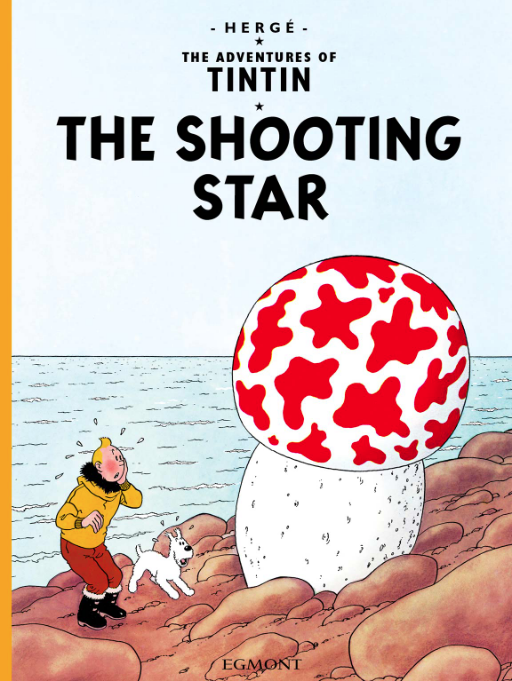

In Tintin’s tenth adventure he has to deal with a ‘near earth asteroid’ event, allowing Hergé to indulge his interests in science and a little bit of gentle pedagogy, whilst telling a fantastical adventure story. As his first venture in this direction it’s not surprising that it’s somewhat naive in this respect, his ‘mad professors’ more caricatured and his ‘science’ itself (always at the service of his stories, rather than dominating them) more slapdash hokum than it would eventually be, when, with the arrival of Cuthbert Calculus, and particularly for the lunar adventures, Hergé wanted his science to be at least plausible.
After spotting an extra star in ‘The Great Bear’, growing alarmingly quickly and attended by a heat wave and numerous other odd occurrences, Tintin consults Professor Phostle at the local observatory. The prof. is greatly disappointed when the meteor passes near the earth without actually colliding, but revives on learning that the meteor contains a new element (a fact brought to his attention by his assistant), a metal which he names Phostlite in honour of, um, himself. The story then becomes that of their journey in a ship captained by Haddock, carrying an international science team, is search of the meteor, which has landed in the polar seas near Greenland. It’s soon learned that a rival team is also making for the meteorite: will Tintin, Haddock, Prof. Phostle and co., aboard the Aurora, beat the Peary and her crew, and thwart the Sao Rico financier Bohlwinkel?
The supposedly devout Catholic Hergé (thankfully) hardly ever refers to religion in his Tintin adventures.* Indeed, here we have the former assistant of Decimus Phostle, now the self-styled ‘Prophet Philipullus’ – one of the only characters in the entire panoply of Tintin to explicitly use theological jargon – who is both clearly insane and a nuisance to our plucky hero. Interesting! Other points of interest include the depiction of Auguste Picard, a real life scientist Hergé had seen in Brussels, as Swedish scientist Eric Björgenskjöld. Picard was the figure who ultimately inspired Hergé’s creation of Cuthbert Calculus. There are also appearances by Prof. Cantonneau, who reappears in The Seven crystal Balls, and Capt. Chester and his ship the Sirius, who return in Red Rackham’s Treasure
Two rather more contentious points are the ethnicity of Bohlwinkel – is he, as some suggest (his name was originally Blumenstein), an anti-Semitic caricature? – and the changing of his nationality and that of the backers of the rival expedition from Americans to South Americans. On the other side of the scales, Hergé clearly wants to show, as the multi-national science team of the Aurora makes clear, that science is a cross-cultural international collaboration. The references to science range from the plausibly informed mention of spectroscopy to the fanciful effects of Phostlite.
Although it’s the tenth adventure in the Tintin canon, it was actually the first to appear as a full colour ‘album’ in what became the standard Tintin format. Created during the war in occupied Brussels, the changes subsequently made are fascinating, and in some cases rather worrying. But the end result as it now stands is a solid example of early-middle-period Hergé, and very enjoyable.
* At least not as we see them today, his original strips were significantly altered between their original weekly episodic state and the ‘album’ versions we now see today.
